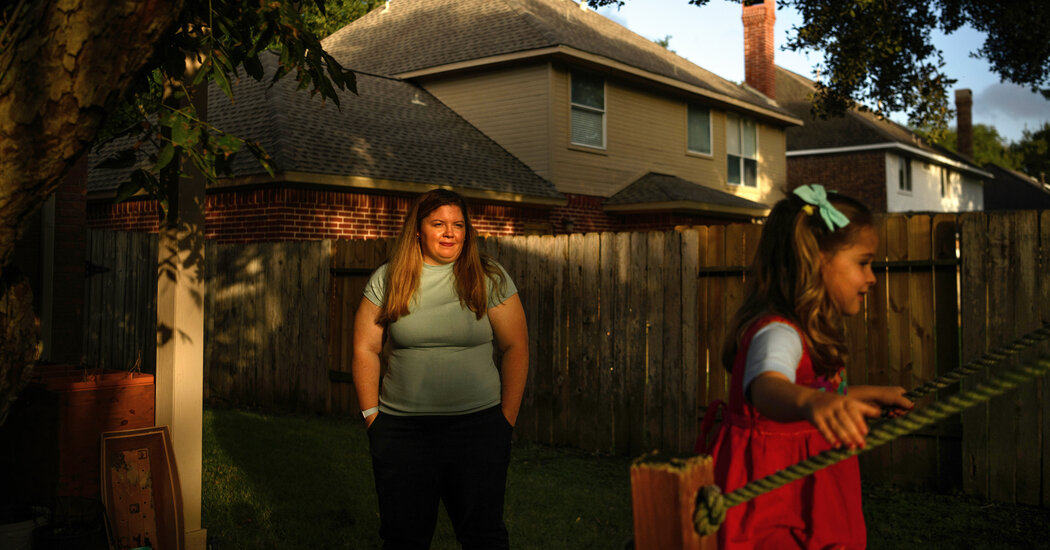The Governor, the Wolf and the Warden: A Fresh Look at a Gianforte Hunt
The game warden in Helena, Mont., received a phone call one morning in March 2021 with a request that he knew might not end well for him. His boss and friend at the Montana Fish, Wildlife and Parks Department asked him to record officially the killing of a wolf, a fairly routine request save for one detail.
The hunter was the state’s governor, Greg Gianforte.
“I said I wanted no part of it,” the warden, Justin Hawkaluk, recalled with a barely audible chuckle.
Mr. Hawkaluk now says his sense of dread was warranted. By the time the wolf affair was settled, his superiors had pressured him to lie about the governor’s role, and his boss would be forced out of the department, he told The New York Times in his first interview about the episode. He, too, would leave a job he said he loved.
The story of the governor, the wolf and the warden made few waves when it first broke. Wolf hunting is legal and fairly common in Montana. Mr. Gianforte was recorded as the killer of the animal, an adult black wolf, and given a warning for not having taken a required trapping course. A spokeswoman for the governor said Mr. Gianforte had “immediately rectified the mistake” by taking the course. A spokesman for the department said at the time that the matter had been handled as it would have been for anyone.
But Mr. Gianforte, a Republican, is running for re-election this year, and some find the killing of a once-protected species distasteful. The treatment of wolves is back in the news, after a snowmobiler in Wyoming struck one, taped its mouth shut and showed it off at a bar before killing it.
Law enforcement officers involved with recording Mr. Gianforte’s wolf, collared as No. 1155 by trackers in nearby Yellowstone National Park, now say the procedures were anything put typical. They say that officials leaned on them to record the governor’s hunting buddy, rather than governor himself, as the shooter, in an attempt to avoid giving the governor a citation, and that the officials bristled when the warden and his boss refused.
Mr. Hawkaluk said he saw it as an attempted “cover-up.”
“I don’t know if the governor had anything to do with, or was even aware of, it,” he said. “But I was, like, ‘Guys, nice try, but, no, you’re going to have to take your medicine.’”
The governor’s spokesman, Sean Southard, did not directly address whether Mr. Gianforte had been involved in trying to foist the wolf hunt onto his friend. Instead, he dismissed the warden’s account as “far-left fever dreams pedaled by desperate partisans.”
Greg Lemon, a spokesman for the department, said that the agency would not comment on personnel issues but that its employees did their jobs “without political calculation or motivation.”
There was nothing illegal about killing a radio-collared wolf that had strayed out of the national park and onto private land. About 250 to 300 Montana wolves are intentionally killed each year, some as trophies, some by ranchers who blame them for killing livestock. Since their reintroduction into the wilderness three decades ago, Montana’s wolves have been tracked and studied to see how they are affecting the environment, natural and man-made.
Before the wolf in question was shot, it was caught in a foothold trap on a 213,000-acre ranch outside Yellowstone that is owned by the heirs to the Sinclair Oil fortune. It is unclear who set the foothold trap. Mr. Southard said Mr. Gianforte and a trapper-friend both set and monitored traplines according to regulations.
But one day in March 2021, as regulations prescribe, Montana’s governor called the Fish, Wildlife and Parks hotline to report that he had shot and killed a trapped wolf.
Department staff members got the message the next morning, and the head of law enforcement for the department, Dave Loewen, called Mr. Hawkaluk to ask him a favor: Could he come into headquarters and write up the wolf? And, oh, yeah, Mr. Loewen added, the shooter was Governor Gianforte, a famously temperamental man who in 2017 was sentenced to 40 hours of community service and 20 hours of anger-management classes for assaulting a reporter the night before he won a seat in the House of Representatives.
Minutes later, Mr. Loewen was told by the leaders of the department that Mr. Gianforte’s friend, an outspoken trapper named Matt Lumley, should be credited with the kill, Mr. Loewen said. Mr. Loewen called Mr. Hawkaluk to relay that instruction. The problem: Mr. Gianforte’s name was already in the database as the trapper of record.
“I could read between the lines,” Mr. Hawkaluk recalled. “I said, ‘Whoever you’re talking to over there better get their story straight, because Gianforte called that in as the trapper of record.”
“The whole thing felt icky,” he said.
With the warden refusing to go along, Mr. Loewen said he and the deputy director of the department went to the office of the department’s director, where, sitting at a conference table, was Mr. Lumley. Mr. Loewen did not back down from attributing the kill to the governor. His superiors relented and agreed to credit the governor with the kill. Then they issued a public warning to him for killing a wolf without the required trapping course.
From that point on, things went from bad to worse for Mr. Loewen. Rumors began circulating of an inappropriate relationship with another department employee, Mr. Hawkaluk said and Mr. Loewen confirmed. When those were batted down, Mr. Loewen was accused of fostering a hostile work environment and put on administrative leave in July 2022. He staunchly denied the charges.
By October 2022, according to a letter laying out the terms of Mr. Loewen’s departure and obtained by The New York Times, Mr. Loewen had been released after 22 years in the agency, with $150,000. The mediation fees would be paid by the state. In exchange, Mr. Loewen promised not to sue for further damages or disparage his former employers. The state promised not to disparage Mr. Loewen as well.
Mindful of that nondisparagement clause, Mr. Loewen confirmed the chain of events that led to the warning being issued to the governor but offered no further comment.
“Yes, all that happened,” he said of Mr. Hawkaluk’s timeline.
Mr. Southard, the governor’s spokesman, said confusion over who was responsible for trapping the wolf was understandable. Both Mr. Gianforte and Mr. Lumley had set traps, and tags attached to the trap that had ensnared the wolf identified both men as its owner, he said.
“The governor has been trapping for nearly 50 years,” Mr. Southard said. “Prior to harvesting a wolf in 2021, he had been working to harvest a wolf for the last five years, mostly via hunting and more recently via trapping as well.”
The governor’s spokesman blamed the revival of the wolf issue on “former state employees” who “may hold a grudge.” Though the terms of Mr. Loewen’s release from state employment mandate that “neither will disparage the other,” Mr. Southard said those former employees nursed that grudge because they “may have been held accountable for either violating the law or failing to adhere to workplace policies.”
Mr. Loewen declined to comment on the governor’s response. Mr. Hawkaluk said he was not disgruntled when he left the agency in January to become a field consultant for the Montana Federation of Public Employees, nor was he ever accused of violating any law or workplace policy.
For the state’s wolf-protection advocates, the governor’s offense was not his lack of coursework but the potential cruelty of the kill.
Trapped wolves are in such distress that they often chew off their own trapped leg. Montana trapping regulations say that a trapper “must immediately dispatch any uncollared wolf” caught in traplines, and that those lines must be checked every 48 hours. The same regulations advise that trappers “may release an uninjured collared wolf.” Collared animals are allowed to be killed, but many hunters avoid doing so out of deference to the researchers studying them.
Since the Montana Legislature was in session in Helena, the capital, at the time of Mr. Gianforte’s kill, wolf experts doubt the governor could have set the trap and then made the 177-mile trip to shoot the wolf quickly enough to satisfy regulations designed to minimize suffering.
“The logistics of that are not realistic,” said Nathan Varley, whose Yellowstone Wolf Tracker has been leading wolf-watching tours for 18 years. He added, “Even though wolves are out of favor in the state of Montana, they are loved by enough people that it just was not good optics to shoot a wolf in a trap. How ugly is that?”
Mr. Southard pushed back.
“The far left has sowed the seeds of rampant rumors regarding the harvest,” he said.
As for that original warning issued to Mr. Gianforte, the man who designed the classes that the governor had not taken said the infraction was serious. An improperly licensed hunter should have received a hefty fine or lost his license, said Thomas Baumeister, now with the Montana chapter of Backcountry Hunters and Anglers.
“Enforcement has a fair amount of discretion; there are few areas where it’s black-and-white,” Mr. Baumeister said. But with a radio-collared wolf just outside Yellowstone, he was more definitive. “On this one,” he said, “it is black-and-white.”


